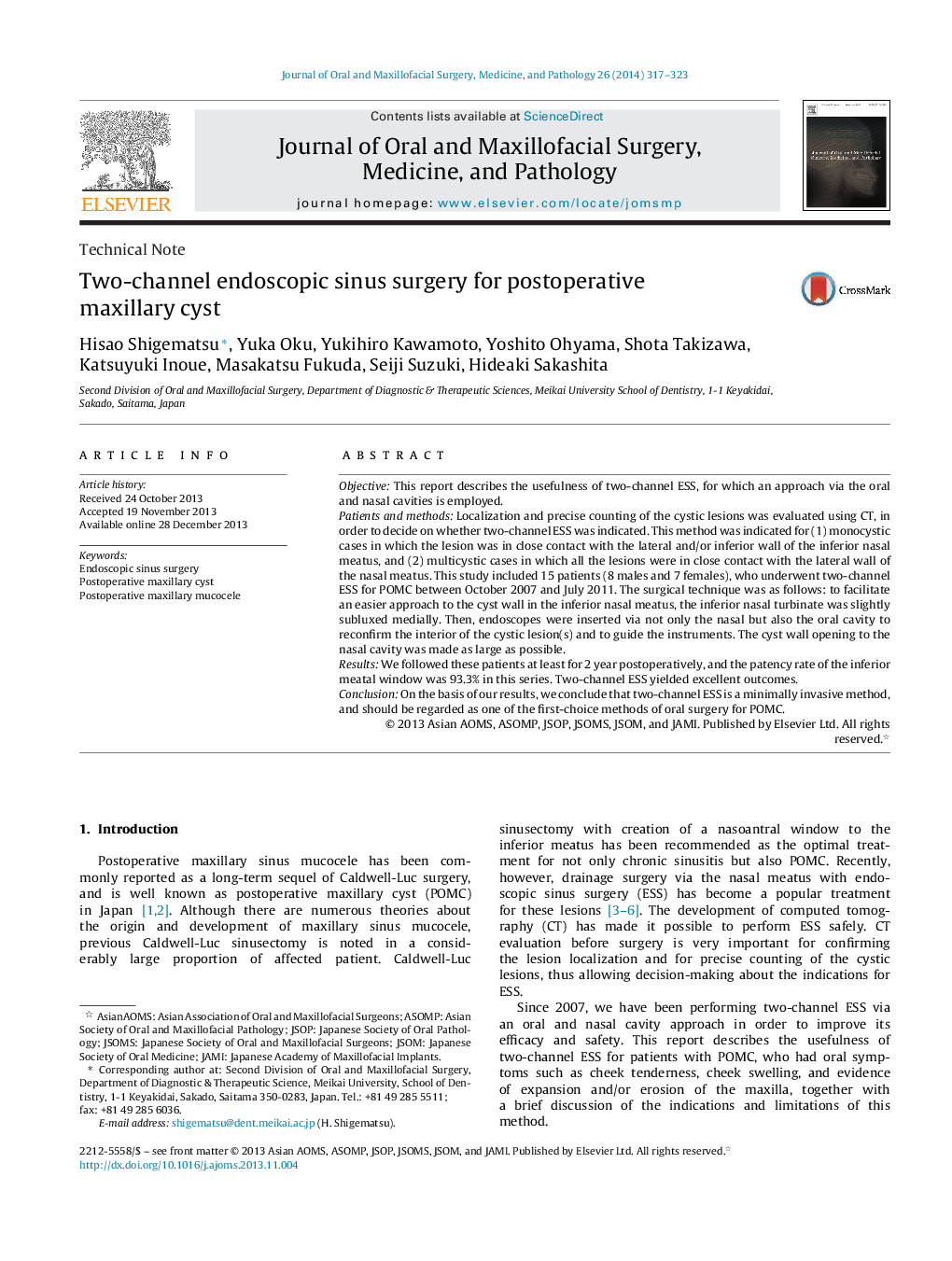| Article ID | Journal | Published Year | Pages | File Type |
|---|---|---|---|---|
| 3160003 | Journal of Oral and Maxillofacial Surgery, Medicine, and Pathology | 2014 | 7 Pages |
ObjectiveThis report describes the usefulness of two-channel ESS, for which an approach via the oral and nasal cavities is employed.Patients and methodsLocalization and precise counting of the cystic lesions was evaluated using CT, in order to decide on whether two-channel ESS was indicated. This method was indicated for (1) monocystic cases in which the lesion was in close contact with the lateral and/or inferior wall of the inferior nasal meatus, and (2) multicystic cases in which all the lesions were in close contact with the lateral wall of the nasal meatus. This study included 15 patients (8 males and 7 females), who underwent two-channel ESS for POMC between October 2007 and July 2011. The surgical technique was as follows: to facilitate an easier approach to the cyst wall in the inferior nasal meatus, the inferior nasal turbinate was slightly subluxed medially. Then, endoscopes were inserted via not only the nasal but also the oral cavity to reconfirm the interior of the cystic lesion(s) and to guide the instruments. The cyst wall opening to the nasal cavity was made as large as possible.ResultsWe followed these patients at least for 2 year postoperatively, and the patency rate of the inferior meatal window was 93.3% in this series. Two-channel ESS yielded excellent outcomes.ConclusionOn the basis of our results, we conclude that two-channel ESS is a minimally invasive method, and should be regarded as one of the first-choice methods of oral surgery for POMC.
